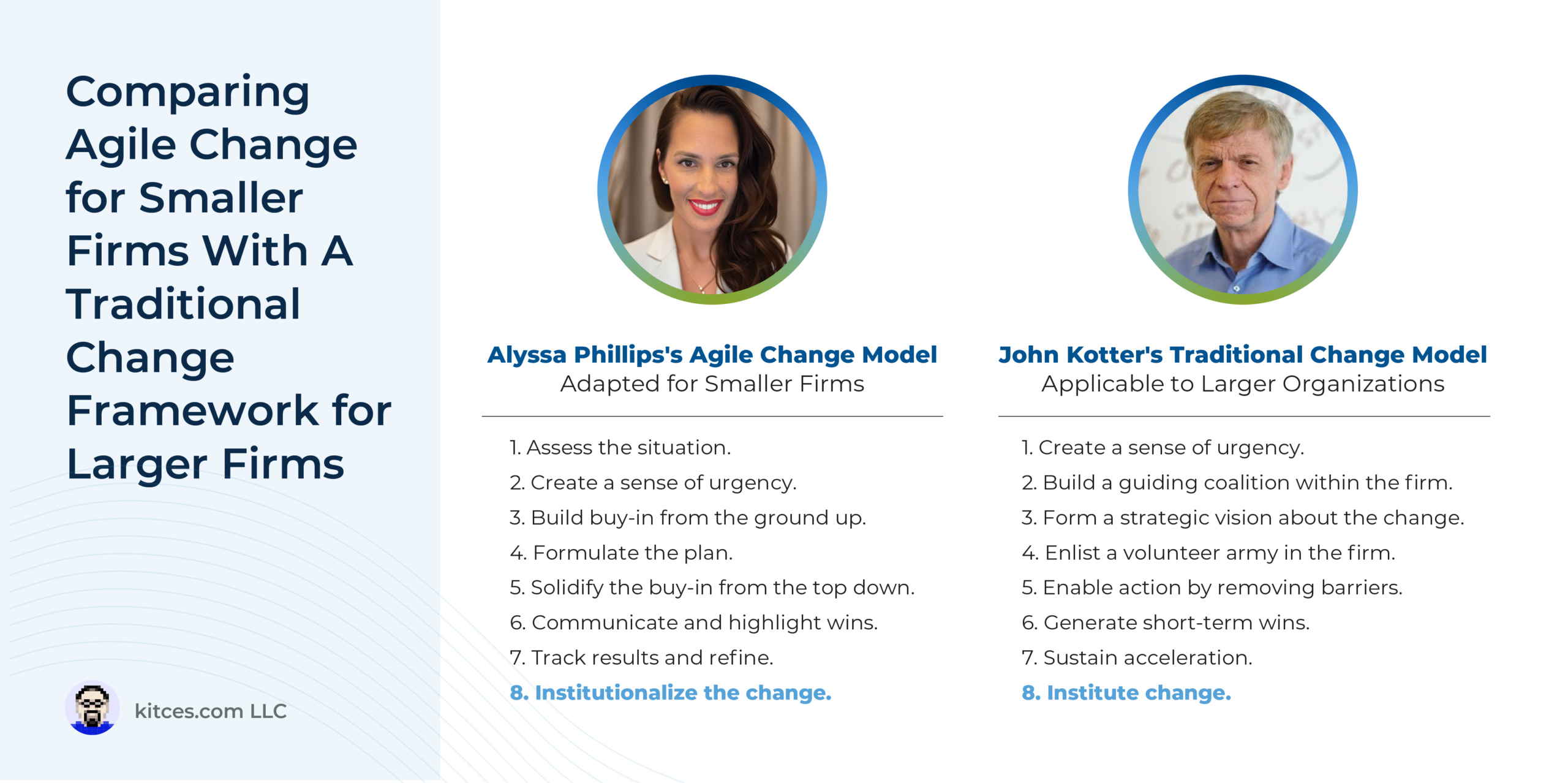For most of its history, the financial advice industry has been very slow to change. Over the last 50 years, even the most substantial changes to occur – such as the movement away from commissions and towards fee-based compensation, and the shift from an investment-centric approach to more holistic financial planning – have taken place over decades and, in many cases, are still ongoing. In the last few years, however, the pace of change seems to have quickened considerably, as the technology landscape has mushroomed, and private equity funding has fueled an unprecedented surge of mergers and acquisitions that has reshaped the competitive landscape.
For many business leaders, the standard playbook for dealing with changes such as those the advisory industry faces today has been based on John Kotter’s change framework, which supports organizational change and alignment with a strategic vision that ultimately helps the business move forward. But while Kotter’s model may work well for larger firms with ample resources and people available to enact change, it can be less effective for smaller organizations with fewer people available to create coalitions for change (and where the power to block change might even be concentrated among one or a handful of executives or owners).
Therefore, those at smaller firms who want to promote change may benefit from a framework based on an “Agile Change” model adapted for smaller firms. In this model, the groundwork for change is first established by assessing the situation (e.g., reviewing external factors like best practices and services or technology solutions available, as well as internal factors like the current pain points employees have with existing processes or technology), then using that information to communicate the importance of change to create a sense of urgency and build buy-in from the ground-level stakeholders who will be affected by the change. Additionally, those promoting change can be very clear about what the process will entail and how it will be implemented (with the caveat that the plan needs to be flexible to allow for change as conditions evolve).
Ideally, the result of all this groundwork is that when explaining the change process to higher-level management and firm leadership, there will already be solid evidence of the support for the change within the organization and the positive impact it can (or has already served to) create, making it more likely to achieve crucial buy-in from the top needed to go through with the change. Once the change process is implemented, it’s critical to track the progress and assess the results so that refinements to adjust and improve the process can be made and, in the best case, can enhance buy-in even more. Eventually, the change becomes part of the normal business process to the extent that it is baked into job expectations with negative consequences for employees who don’t buy into the change, setting the stage to begin the next iteration of change as the firm grows and evolves.
The key point is that even as situations develop rapidly and necessitate constant changes – both large and small – the process for dealing with these changes can be systematized in a way that ensures that the people who need to buy into the change, from the bottom to the top of the organization, actually do so. Although it may take time to lay the groundwork and build support for change before actually trying to implement it, these steps can be crucial to ensure that the change is accepted even among team members who may be less eager to change how they work. Which will ultimately make it easier for the firm to make the changes needed to adapt (and succeed!) in today’s rapidly changing advisory industry!


